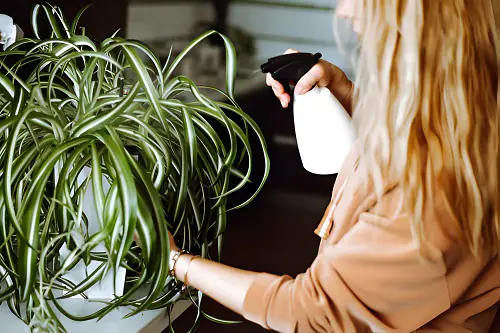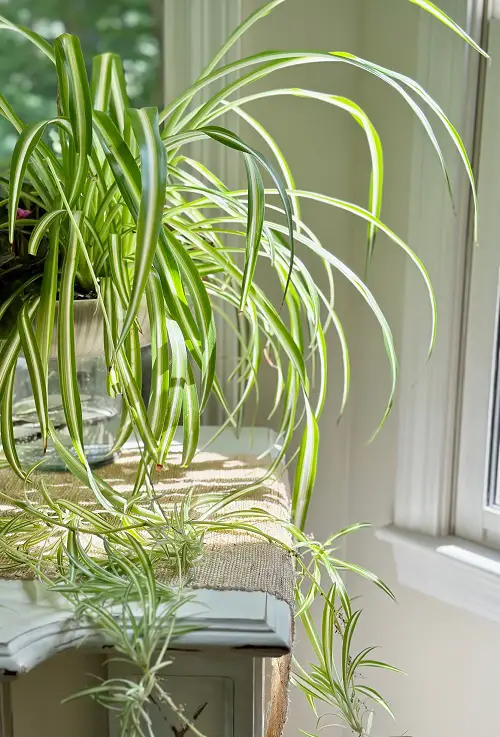Want to know some secret tips on how to water spider plants so they never die? Well, here’s how to keep them immortal!

Spider plants are champions at surviving drought but that doesn’t mean you can water them any which way you want. Doing it in a wrong way will make them droop and die. So, what’s the right way to moisten that soil to ensure they keep on living for years? Read on!
Understanding Spider Plant Roots
Spider plants have thick and fleshy roots (they are rhizomatous), which are a kind of survival kit. Why? These roots are essential for nutrient uptake and water storage. Since they retain water, they can help the plants survive periods of drought. Pretty good, right?
Well, not entirely. There’s a downside to this because they are more susceptible to rot if you overwater, especially indoors. The roots of spider plants are also shallow, so it is always a good idea to soak them good (deep watering) and then moisten the growing medium again when it feels dry to about 1 inch deep from the topsoil.
How To Water Spider Plants So They Never Die

There’s one you need to keep in mind before watering your spider plants. Make it a habit to check the soil for moisture before watering, and only do it if the soil is dry to the touch. You can also use a moisture meter for this purpose.
Best Water for Spider Plants
The right kind of water also plays a role in watering spider plants so they don’t die. Filtered water helps get rid of Chlorine and Fluoride impurities that may harm the sensitive roots.
Switching to distilled water also helps avoid browning of leaf tips, but don’t give it to your plant when it’s hot. Gently pour it into the soil once it’s reached room temperature so there’s no shock.
You can also go for RO, rain, or stream water for this purpose.
Factors That Determine the Watering of Spider Plant

1. Potting Medium
Different potting mediums need different waterings. Simple ones that are peat-based or made using coconut coir are great for moisture retention, so you need to water them less. On the other hand, spider plants in perlite or pine bark need more frequent watering.
2. Temperature
If your home is warmer, then the soil will dry out quickly, and you’ll have to water your plants more. But if it’s colder, you need to do the opposite and give them a couple of extra days before watering them again.
3. Humidity
Higher humidity equals less watering needs. It’s as simple as that. If you water your plant that same way when it gets more humid, it will lead to root rot. So pay attention to it.
4. Pot Size
You also need to pay attention to the pot. Larger pots mean more soil; it’s not rocket science, right? These pots also retain moisture for a long time and need little watering. Also, drainage holes are a must.
If your spider plant indoors is in a smaller pot, it will dry out quickly and will need watering slightly more frequently than one that’s growing in a huge pot.
5. Location
If the plant is at the location where it gets morning sunlight for 3-4 hours and then indirect light for the rest of the day, then the growing medium may go dry in say 3-5 weeks.
If the plant is outdoors in indirect light, then it might need watering once in 6-7 days. If it is indoors in a spot that gets just the indirect light, then it may go on for as long as 15-25 days without the need of watering again.
6. Leave the Leaves Alone!
If you don’t want diseases and pests on your beloved beauty, make sure the leaves are not getting wet while watering the plant. Also, spraying water on the foliage thinking it will help the plant grow better is a NO.
Watering Spider Plants When You are Out
If you are planning to travel, then watering spider plant is crucial during your absence and this is where you could take the help of self watering. This article has all the hacks you will need for this purpose!


